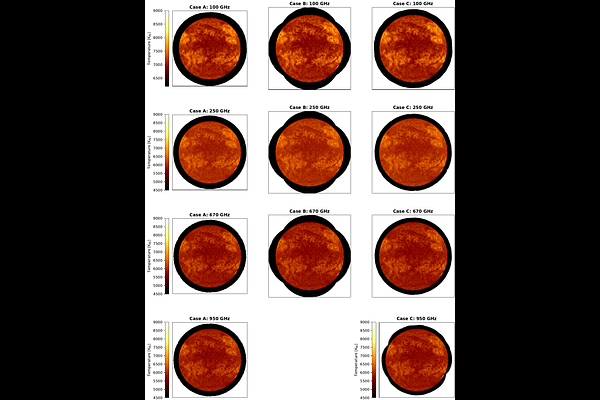Observing the Sun with the Atacama Large Aperture Submillimeter Telescope (AtLAST): Forecasting Full-disk Observations

Observing the Sun with the Atacama Large Aperture Submillimeter Telescope (AtLAST): Forecasting Full-disk Observations
Mats Kirkaune, Sven Wedemeyer, Joshiwa van Marrewijk, Tony Mroczkowski, Thomas W. Morris
AbstractThe Atacama Large Millimeter Array (ALMA) has revolutionised the field of solar millimetre astronomy with its high angular resolution and cadence. However, with a limited field of view (FOV), targeted observations of highly dynamic phenomena such of flares are challenging. A large aperture single-dish telescope with a large FOV, such as the future Atacama Large Aperture Submillimeter Telescope (AtLAST), would prove useful in observing such phenomena, as one could scan the full solar disk on shorter timescales. We aimed to explore what FOVs, detector counts, and scan strategies are suitable for AtLAST to push the required full-disk scan times below 1 minute, enabling regular observations of dynamic solar phenomena. Utilising the maria code, we were able to simulate solar observations with AtLAST, and thoroughly explored how instrumental properties and scanning strategies affect the full-disk observations in the planned frequency bands. We find the double-circle scan pattern, currently employed at ALMA for full-disk mapping to also be an acceptable way of scanning the Sun with AtLAST. Using small to intermediately sized instruments (1000 - 50,000 detector elements), the estimated observational cadence would be less than 1 minute across AtLAST's frequency range with a reasonable pixel spacing. Using instruments with larger FOVs ($\gtrapprox 0.25^\circ$, equivalent to $\gtrapprox$ 1 R$_\odot$), we find a simple circular scan to be more efficient, achieving cadences on second time scales, but requiring more detector elements ($\gtrapprox$ 100,000). We find that a large FOV single-dish telescope such as AtLAST could provide the solar millimetre community with hitherto unachievable observations, namely full-disk observations at high cadence and adequate resolution. With cadences potentially down to seconds, such an instrument would be ideal in the study of quickly evolving solar phenomena.